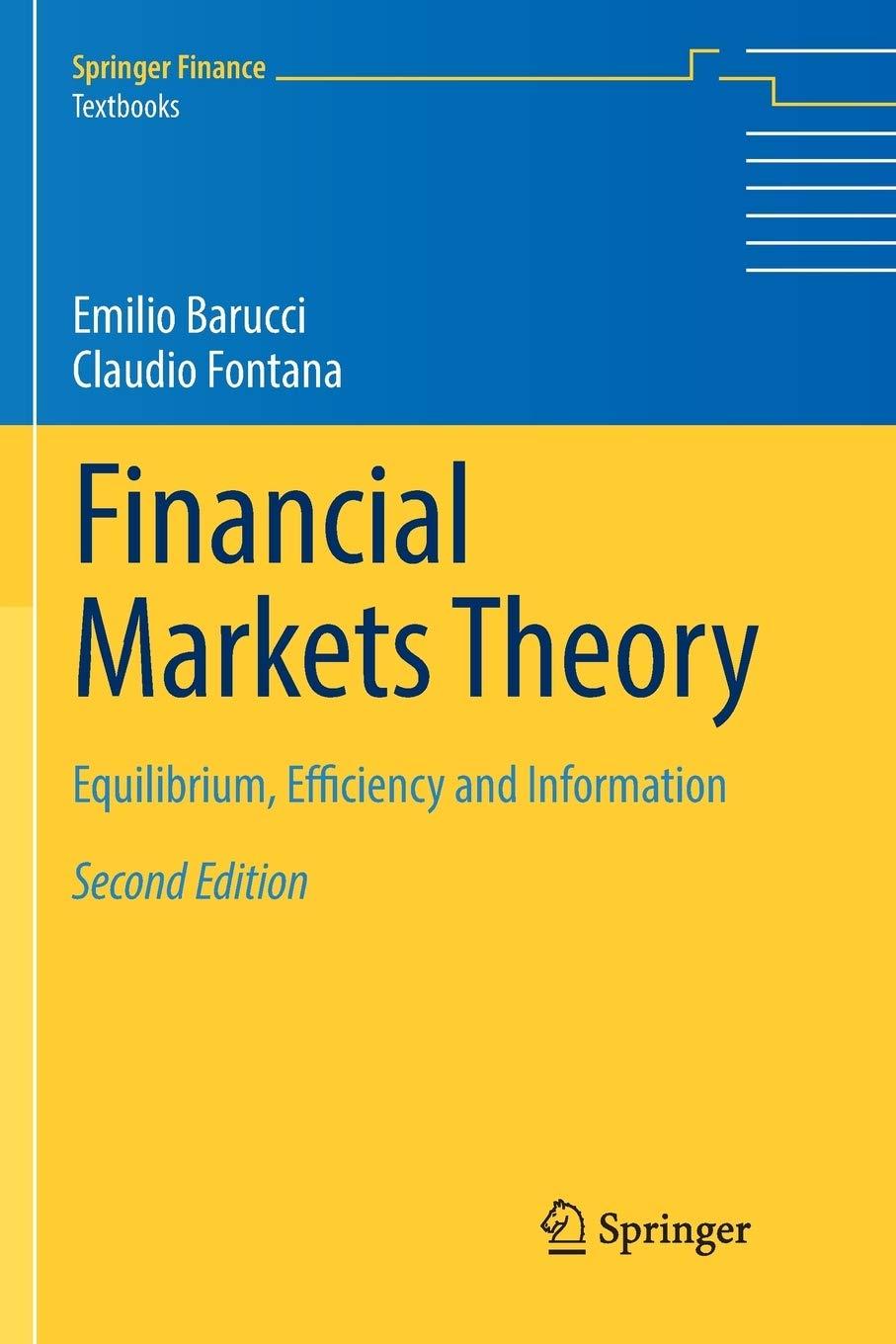Consider an exponential utility function (u(x)=-frac{1}{a} exp (-a x)), with (a>0), and an economy with a risk
Question:
Consider an exponential utility function \(u(x)=-\frac{1}{a} \exp (-a x)\), with \(a>0\), and an economy with a risk free asset with return \(r_{f}=1.1\) and two risky assets with random returns \(\tilde{r}_{1}, \tilde{r}_{2}\) distributed as normal random variables with means \(e_{1}=1.2\) and \(e_{2}=1.3\) and variances \(\sigma_{1}^{2}=4\) and \(\sigma_{2}^{2}=9\), respectively, with correlation coefficient \(ho \in(-1,1)\).
(i) Determine when the optimal portfolio is diversified, i.e., when \(w_{1}^{*}, w_{2}^{*}>0\).
(ii) Suppose that \(ho\) is such that the optimal portfolio is diversified (take for instance \(ho=0.5)\). If \(ho\) increases, how should \(\sigma_{1}\) and \(\sigma_{2}\) vary in order for the optimal portfolio to remain diversified?
(iii) Suppose that \(ho \in\{-0.5,0.5\}\). Give conditions on \(a\) such that the optimal portfolio invests more than one unit of wealth in the risky assets.
Step by Step Answer:

Financial Markets Theory Equilibrium Efficiency And Information
ISBN: 9781447174042
2nd Edition
Authors: Emilio Barucci, Claudio Fontana





